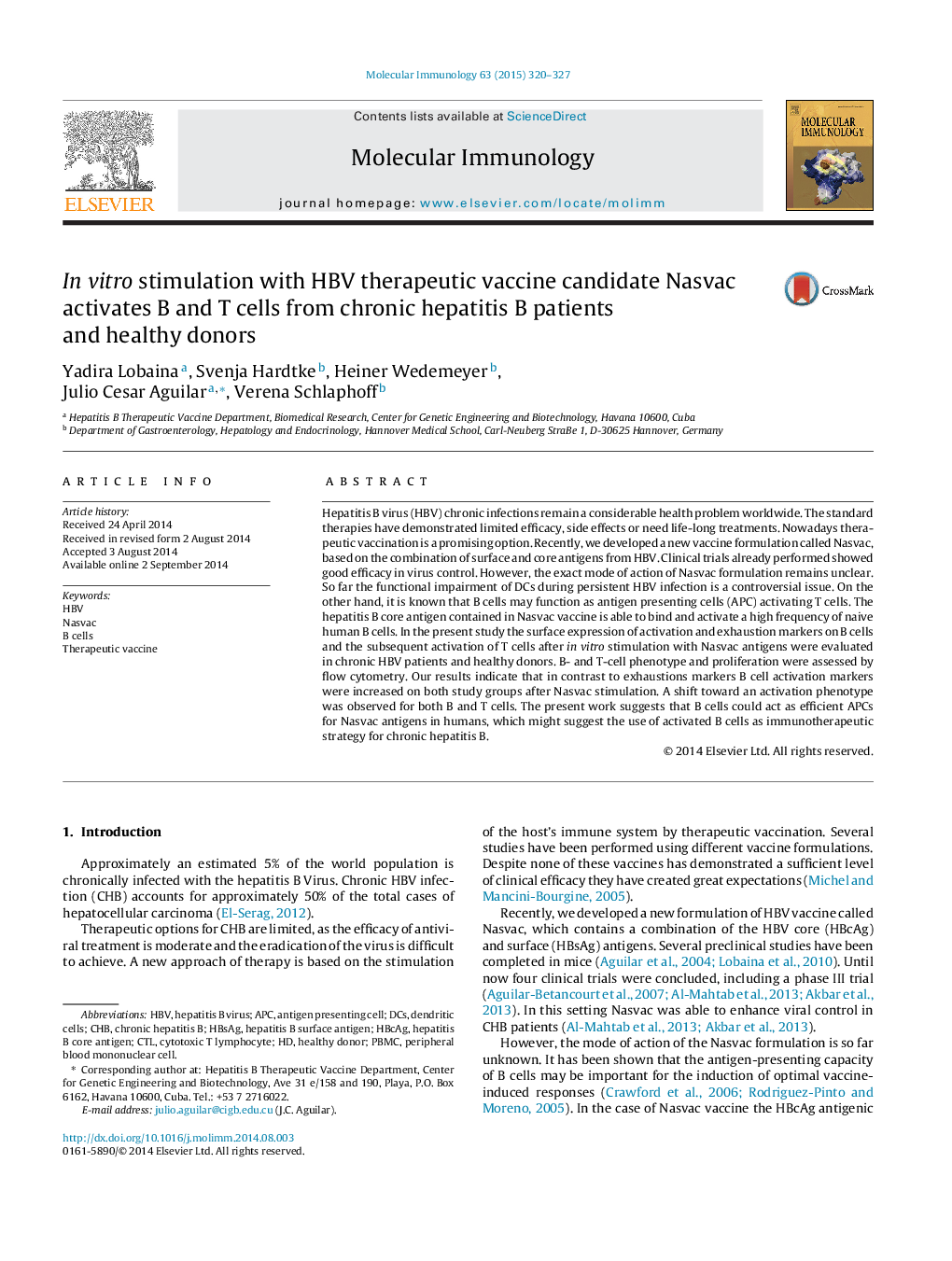| Article ID | Journal | Published Year | Pages | File Type |
|---|---|---|---|---|
| 2830717 | Molecular Immunology | 2015 | 8 Pages |
•B cell activation markers increase on CHB patients after Nasvac in vitro stimulation.•B-cell activation, but not exhaustion is induced in CHB patients after Nasvac in vitro stimulation.•An increase in CD25 on CD4+ and CD8+ T cells, and CD69 on CD8+ T cells was observed after in vitro Nasvac stimulation.•Our results suggest that Nasvac-activated B cells can in turn stimulate T cells.•B cells have no limitations to become important APC during CHB immunotherapy.
Hepatitis B virus (HBV) chronic infections remain a considerable health problem worldwide. The standard therapies have demonstrated limited efficacy, side effects or need life-long treatments. Nowadays therapeutic vaccination is a promising option. Recently, we developed a new vaccine formulation called Nasvac, based on the combination of surface and core antigens from HBV. Clinical trials already performed showed good efficacy in virus control. However, the exact mode of action of Nasvac formulation remains unclear. So far the functional impairment of DCs during persistent HBV infection is a controversial issue. On the other hand, it is known that B cells may function as antigen presenting cells (APC) activating T cells. The hepatitis B core antigen contained in Nasvac vaccine is able to bind and activate a high frequency of naive human B cells. In the present study the surface expression of activation and exhaustion markers on B cells and the subsequent activation of T cells after in vitro stimulation with Nasvac antigens were evaluated in chronic HBV patients and healthy donors. B- and T-cell phenotype and proliferation were assessed by flow cytometry. Our results indicate that in contrast to exhaustions markers B cell activation markers were increased on both study groups after Nasvac stimulation. A shift toward an activation phenotype was observed for both B and T cells. The present work suggests that B cells could act as efficient APCs for Nasvac antigens in humans, which might suggest the use of activated B cells as immunotherapeutic strategy for chronic hepatitis B.
